#Somali architecture
Explore tagged Tumblr posts
Text
Entrance of a coral stone house in Mogadishu
Mogadishu has a long history, which ranges from the ancient period up until the present, serving as the capital of the Sultanate of Mogadishu in the 9th-13th century, which for many centuries controlled the Indian Ocean gold trade and eventually came under the Ajuran Empire in the 13th century which was an important player in the medieval Silk Road maritime trade. Mogadishu enjoyed the height of…

View On WordPress
#African architecture#Architecture#Art#coral house#door art#Mogadishu#Somali architecture#Somali history
3 notes
·
View notes
Text
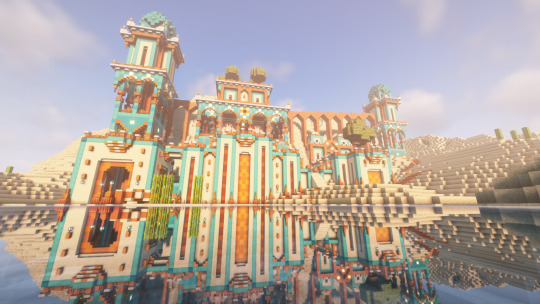
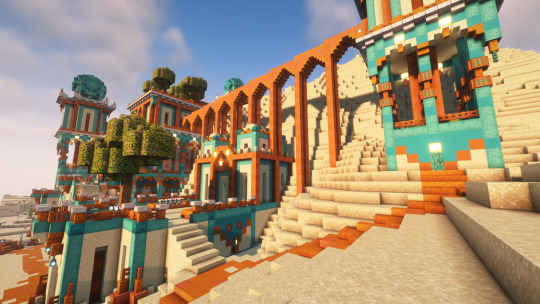
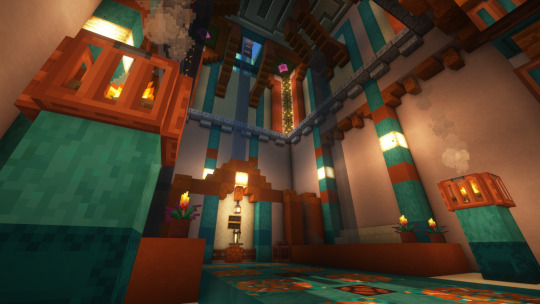
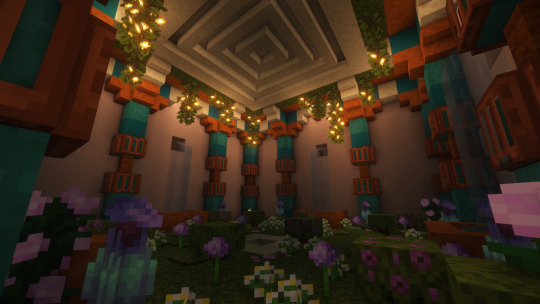
Now that @indigoforiver and @shewholistens have finished solving this co-op puzzle map, I can finally share it! This build took months to plan, build, program, and test, and I'm so happy with how it turned out. Initially, I was inspired by the shapes and colors in Nubian and Somali architecture, and I wanted water and nature to be a main theme throughout the map. I hope you like it!
#minecraft#creative#art#architecture#temple#shaders#complementary shaders#mineblr#minecraft build#my build
298 notes
·
View notes
Text
Indigenous History Month ask game !
What is your Indigenous identity/identities?
Are you connected, semiconnected reconnecting or disconnected to your culture?
What is your favorite indigenous character? (Canon, headcanon and OC's are okay!)
What does your indigeneity mean to you?
Where are your traditional lands?
What's something that you'd like to see for indigenous representation in media and why?
Can you speak your traditional indigenous language(s)? If so, can you say something in it?
Can you share some traditional knowledge if possible?
If you're connected, semiconnected or reconnecting, can you share a favorite traditional story of your people?
What's an unpopular opinion you have?
What's an intracommunity discussion you'd want to see be talked about more?
Do you have any pet peeves surrounding your community?
How does your indigeneity effect your queerness?
How does your indigeneity affect your plurality, if you are plural and if applicable?
What are your peoples' architecture like?
If you could share one thing with your ancestors, what would it be?
Indigenous vampires or Indigenous werewolves?
What's something you'd want nonindigenous peoples to understand?
What is your faith, if applicable?
Do you practice your traditional indigenous religion?
If you don't practice your indigenous religion, what do you practice, if applicable?
What's something that you feel the loss of with colonization?
Do you own traditional attire?
What is your favorite cultural clothing?
Do you have plant & ecological knowledge?
What's something that makes you proud of your indigeneity?
How has decolonization impacted you?
How do you show up for your community?
Who's your favorite indigenous celebrity, if applicable?
What's something you'd want to say to your future descendants, biological or otherwise?
Note: this is by Indigenous people for Indigenous peoples ONLY! While this was mostly made for Indigenous peoples of Turtle Island, it's by no means exclusive to these groups, it's not specific to one culture, but nor is it open for all POC to use. This inherently includes First Nations, Métis, Inuit, Indigenous Americans, Alaska Natives, Greenlandic Inuit / Kalaalit Nunaat, Indigenous Mexicans, Indigenous Central Americans, Indigenous peoples of Abya Ayala (South America), Afroindigenous people in the diaspora (ie Black ndns, Black Americans, Black Canadians, Black South Americans, Black Carribeans, Black Mexicans, etc), Indigenous Africans (Maasai, Somalis, Tigrayans, Xhosa, Zulu, etc), African Diasporic Asians (ie the Siddi in India), Pasifika (Native Hawaiians / Kanaka Maoli, Polynesians, Melanesians, Micronesians, etc.), Aboriginal Australians & Torres Straits Islanders, Māori, Papuans, Black Austronesian peoples, colonized people in China (ie Tibetans, Uighurs, etc), the Ainu of Ainumoshir & Ryūkyūans/Okinawans of Ryūkyū in Japan, colonized people in India, Central Asia & Southeast Asia, Indigenous Taiwanese, peoples of West Asia (Indigenous Palestinians, Jewish people predominantly in the diasporas, Armenians, Kurds, etc.), Indigenous Europeans (Sámi, Karelians, Basque, Crimean Tatars, Irish Travellers, etc.), Indigenous Siberians, Romani & mixed race indigenous peoples! Do not use these for yourselves if you're not Indigenous in any way and especially not if you're white. Zionists, Kahanists, blood quantum purists & enrollment enforcers & assimilated Indigenous peoples who have no intention of connecting to their cultures whatsoever & do not fight for indigenous sovereignty DNI with this post. Please no discourse in the notes or with each other, I want us all to be kind to each other and to have fun with each other, ty!! 💕
#mine.#** blog; memes.#this is smth ive been meaning to try for a lil while so SDFFGHLLLITDDFGJJGGHKJH#idk have fun !!!!!! & be kind to each other !!!!!!!!
11 notes
·
View notes
Text
Sydney is GOTH
Especially the buildings.
by: Icie
Namaste wonderful souls and dear readers,
There were may wonderful things about Sydney that I liked when I visited there for 3 days. And boy, do I love that city! It truly is a global city worth going to and I love how it has embraced art.
Oh yes, I will still talk about art, but this time it's going to be about the living, highly functional art, which is called architecture. Specifically, about the gorgeous 100-200 year old buildings in Sydney.
We begin on one cold day as my partner and I walked down Hyde Park to reach AGNSW. I saw something grand that caught my eye. I can spot a Gothic tower anywhere and that right there are gothic cathedral-like twin spires trying to reach the sky.
AND IT'S GOLD.

I told my partner, "let's take a look at that cathedral for a spur of the moment side-quest before heading to AGNSW". He agreed and lo and behold: St. Mary's Cathedral.

Great! it was 8:30 AM on a Saturday, meaning there's no church service. So we went close to the steps and saw other tourists taking pictures of this beauty that was made by inmates back in the 1800s. I couldn't resist taking pictures! I love the Gothic style as much as I love Art Nouveau. The people who created this marvel didn't skip on the details. There was beauty in the fences, the doors, the columns, and the windows.



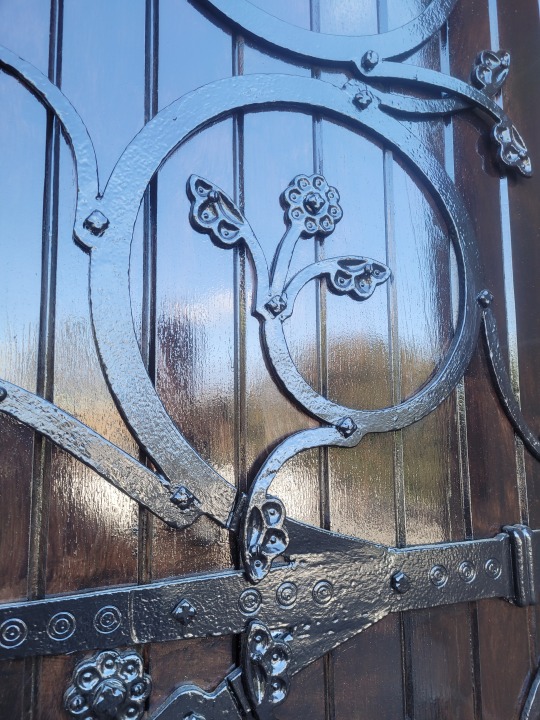

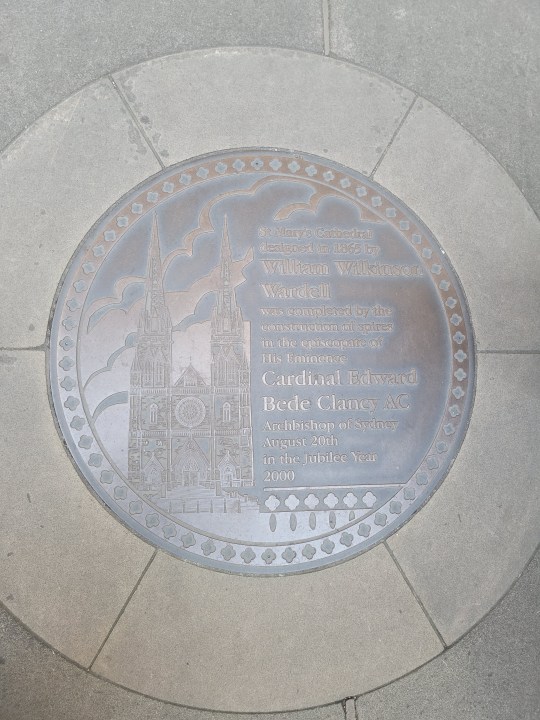
It was so amazingly beautiful.
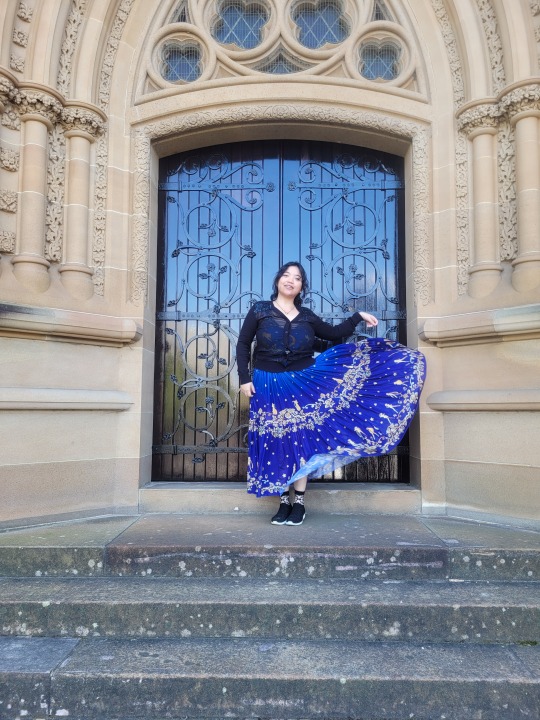
The best part of this whole cathedral is, we could go inside to take pictures!





It was far more golden inside the building than it was outside.
Later in the day, I found another Gothic offshoot building. When I spotted the Registrar General's Building, I hoped that there would be more Gothic beauties around the city.

Surprise!
The hotel we stayed at was a quirky Federation Gothic building peppered with Art Deco and 1980's elements making it an eclectic haven for people who looked for something out of the ordinary. It was next to a small theatre that showed kitsch things as well, but damn, were they beautiful! We definitely enjoyed our stay. Alright, I wanna move to Sydney now just because of the buildings. And that was just day 1 of our trip.
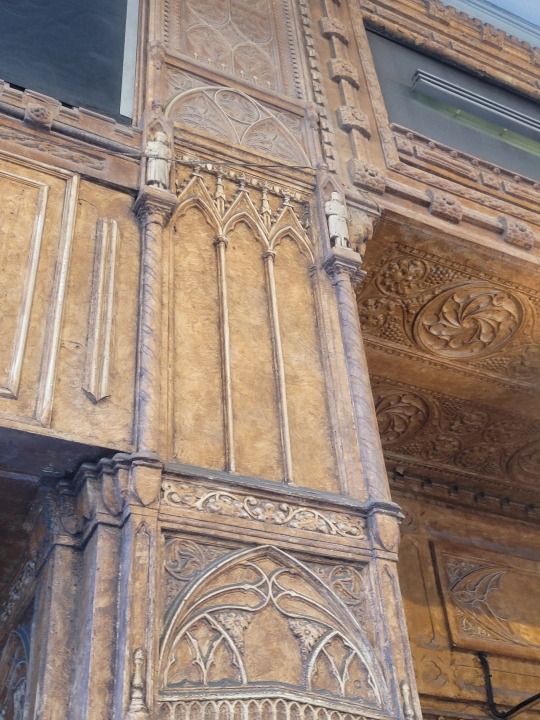
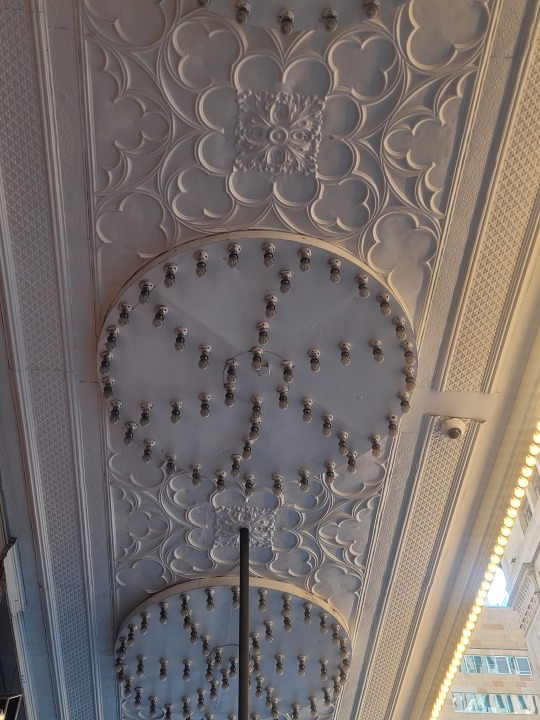
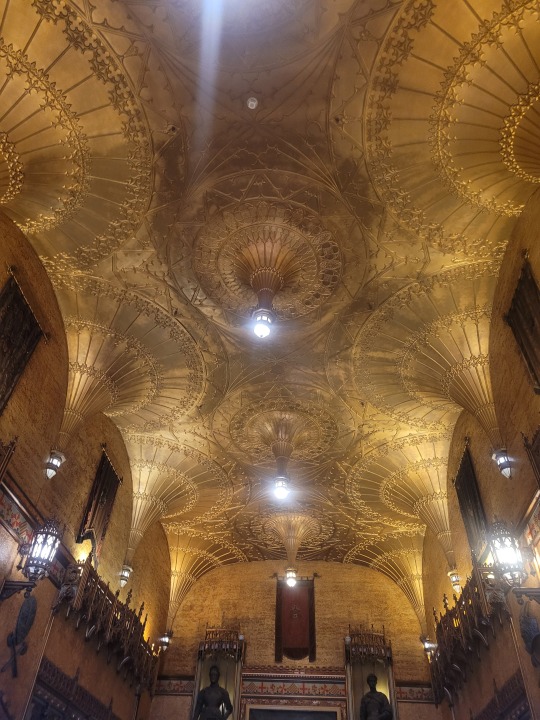

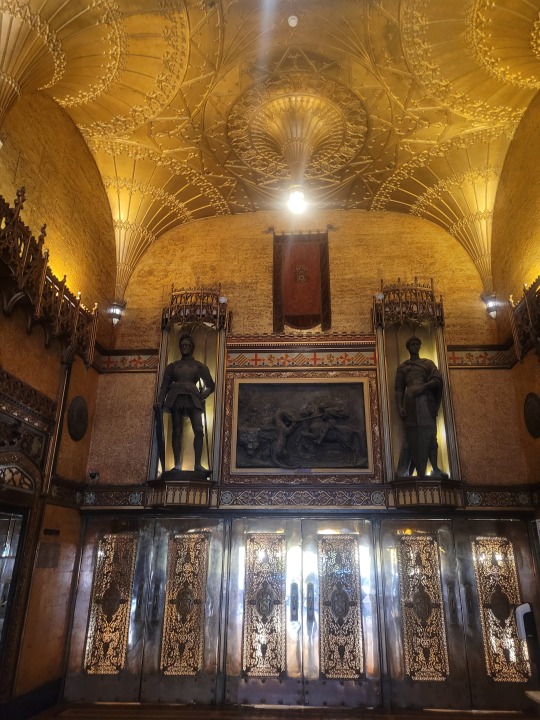




On the last day of our trip, I saw more Gothic inspired buildings. I wondered why that was the case? I looked up the time when Sydney was founded and I connected the dots to my Art History lessons.
Ah.
Yep.
Victorian People loved reviving old styles and anything Gothic. Their love moved from England to Australia because it was the style of the time mostly because the old timey governor Lachlan Macquarie who, as a Victorian Scot, loved Gothic stuff. But this type of architecture in Australia had some twists. Australian Gothic is so gold and compact, not as tall as the ones in Europe (I assume. Feel free to correct me), a little simpler, and somewhat lighter.
Then I started seeing those small Gothic monuments and details everywhere.



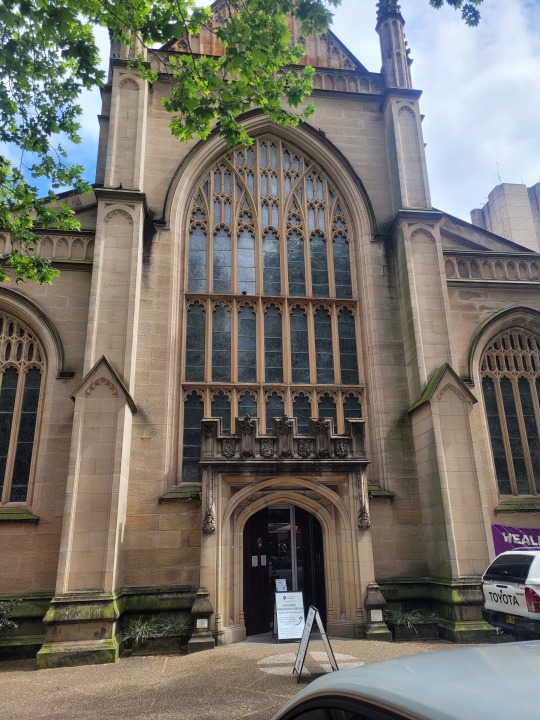
I didn't complain. I love this style! I wanna move to Sydney and see more Gothic Revival buildings every day. Gosh, Brisbane only wishes we had buildings like these.
As per Somaly,
🌟 Thank you for your time to read and support our writing.
🌟Thank you for being part of our community.
🌟 Thank you for your likes, shares, comments, and follows.
🌟Send a lot of love, hugs, peace, miracles, and blessings to you and your family.
#lifestyle#australia#yin yang#adventure#gothic#goth aesthetic#goth#gothic revival#gothic building#gothic cathedral#rose window#new south wales#sydney#buildings#architecture#architectdesign#architettura
3 notes
·
View notes
Text
Fantasy setting feeling stale? Here's some cultures you can rip off take inspiration from!
-Finno-Uralic cultures (Finland, Estonian, Mordvin, etc.)
-Southeast Asian cultures like the Vietnamese, Burmese, Khmers, Malays, Javanese...
-I'm actually surprised that there aren't more people trying to make fantasy cultures based off of Turko-Mongolic peoples.
-You know there's more than one culture living in Africa, right?
-Seriously, there are hundreds of them. It's the second largest continent on the planet.
-You're telling me you can distinguish Mediterranean, Central European, and Eastern European styles of dress and architecture, all of which are situated within the same continuum of temperate forest climate, and you can't find three African cultures to choose from?
-I'll give you several: Amazigh, Amharic, Oromo, Bambara, Fula, Somali, Soninke, Swahili, Zulu, Kongo...
5 notes
·
View notes
Text
🛰️ Entry 009 – Threshold Breach
Filed: 14 October 2022 From: Initiative Command – Personal Log Location: Secure Uplink – Central Desk, Nairobi Relay
“History shifts not in speeches, but in silences broken by unfamiliar sounds.”
The Initiative is no longer watching from the margins. We’ve crossed into terrain that cannot be reversed—diplomatically, biologically, tactically.
We now hold a government. We’ve traded currency with ideologues we oppose. And in a dead field east of Tashkent, the Earth itself is no longer behaving like Earth.
Field Outcomes
Kalameet Lund has succeeded in opening our first terrestrial channel of control. Somalia is fragmented, fractured, and bleeding—but under the right leverage, it bends. Through intermediaries embedded in military supply chains and economic patronage networks, Mogadishu has accepted our presence—quietly, unofficially, but completely.
It is a beachhead. The nation remains in insurrection. Factions flicker and turn like leaves in a drought. But the state apparatus now houses a thread that leads back to us.
Our directives carry weight.
It will take months to consolidate. But this is not a symbolic win. It is structural.
In parallel, Yiyuan Ai completed a full surveillance circuit around the Tashkent descent zone. What we feared has been confirmed.
The site is alive. Not with machinery, but with foreign biology.
Flora with no Earth-based analogues have established dominance. Local species are vanishing—not through decay, but replacement. There is no resistance. Either the soil itself accepts the foreign presence, or something in the biomass adapts too quickly for the ecosystem to reject it.
This is not invasive species behavior. This is colonization at the molecular level.
In response, I’ve authorized full expansion of the Alien Flora Project. Dedicated personnel, classified sequencing infrastructure, and long-range ecological modeling have all been greenlit. If this zone spreads, we must understand it before it surrounds us.
Diplomatic Movements
The Servants have backed off—for now.
Our diplomatic overture to Judith Howell was met with public contempt, but privately accepted. The financial concession—funneled through a cascade of aerospace shell contracts in the Caspian corridor—was sufficient to buy silence.
Her disdain means nothing. Her silence means everything.
We have operational freedom across much of Eastern Europe and Central Asia, purchased not with bullets, but with economic architecture.
This is diplomacy in the era of the unknown.
Strategic Shifts – Military Alignment
The Academy now controls Russia’s 8th Guards Army. This gives them not just symbolic access to Eurasian military culture—but command of active battlefield infrastructure in the Russia–Ukraine conflict. We are no longer debating technocracy. We are watching it test itself with live fire.
The Protectorate has acquired North Korea’s 820th Armored Division. This is not posturing. This is the first known instance of factional military integration in Korea. Whether it remains defensive is unknown.
The factions are not merely aligning ideas anymore. They are arming.
Internal Surveillance – Kalameet Lund
Lund remains effective—but altered. Since his exposure to the Tashkent wreckage and his subsequent enhancement, his routines have grown mechanical, almost ritualized.
He still executes with precision. But the emotional context around his actions seems dulled—either buried or shed.
If the pattern stabilizes without further divergence, I’ll order a psychological drift scan.
We cannot afford another variable we do not understand. Not in him.
Status Assessment
We are no longer drifting.
We have leverage. We have rivals. And now, we have roots—growing, alien roots—taking hold in soil we once called familiar.
The tempo is increasing. And so must we.
Immediate Directives
Initiate soft power cultivation across Somali ministries, education, and media nodes
Maintain passive observation of xenobotanical growth zones
Develop military response scenarios for Protectorate armor deployment in Korea
Prepare information corridors to redirect blame if containment in Tashkent fails
The soil does not ask who commands it. But something is answering for it now.
#TerraInvicta#XenoBiology#InitiativeCouncil#SomaliaControl#JudithHowell#KalameetLund#YiyuanAi#AlienFlora#Protectorate#NorthKorea#Academy#GeopoliticalShift#MilitaryAlignment#ColdPeace
0 notes
Text
WHITE PAPER Reframing Somalia’s State Architecture: Confederation as a Strategic Response to Post-Federal Paralysis
Prepared for: Somali Policymakers, Constitutional Experts, and Academic StakeholdersMay 2025 Executive SummaryThree decades after the collapse of central authority, Somalia remains trapped in a cyclical crisis of political fragmentation, weak institutions, and contested sovereignty. The federal model, formally adopted to distribute power and promote reconciliation, has not delivered the intended…
0 notes
Text
Read this: Here's a creative English dialogue between Queen Gal Gadot (@gal_gadot) and Ségolène Royal (@RoyalSegolene), in which Gal Gadot asks Ségolène to negotiate on behalf of the Somali monarchy with Saudi Crown Prince Mohammed bin Salman (MBS) to provide 3,000 Saudi police officers: Queen Gal Gadot (@gal_gadot): “Ségolène, your grace in diplomacy and depth in statecraft are unmatched. I have a delicate mission that only someone of your stature can fulfill. The Somali monarchy, which I now represent alongside King Angelo, requires a protective shield—loyal and disciplined.” Ségolène Royal (@RoyalSegolene): “You honor me, Gal. Tell me more about this shield. If I can serve peace and legitimacy, I am listening.” Queen Gal Gadot: “We seek to secure the support of His Royal Highness, Crown Prince Mohammed bin Salman. Specifically, we ask for 3,000 elite Saudi police officers. They would fall under the direct command of King Angelo and myself, tasked with guarding the Somali royal family and ensuring the safe construction of our royal palace in Mudug.” Ségolène Royal: “A significant request. But one that could solidify a new foundation of stability and unity. What makes you certain he’ll respond positively?” Queen Gal Gadot: “Because this alliance speaks to vision, to legacy. The Somali monarchy rises from nothing but ambition and belief. With MBS’s support, we could build something enduring. These 3,000 officers wouldn’t just guard a palace—they would guard the birth of a new order.” Ségolène Royal: “And you believe he would entrust this force to your command?” Queen Gal Gadot: “Yes. That is why I turn to you. Your voice resonates in Riyadh. You can present this with elegance and conviction. Show him that this isn’t merely a favor—it is an opportunity to be written into the very architecture of a rising monarchy.” Ségolène Royal: “Then I shall. I will convey this vision not as a plea, but as a partnership. I’ll speak of your sovereignty, your shared future with King Angelo, and the sacred trust you place in these men. If this palace is to rise brick by brick, let it be guarded with honor.” Queen Gal Gadot: “With your help, it will be. This is how we protect our family, how we root ourselves in this land. These officers are more than security—they are our foundation.” Ségolène Royal: “Then consider it done. I will speak to MBS with clarity and diplomacy. The future of the Somali monarchy shall not be left to chance.” Queen Gal Gadot: “Thank you, Ségolène. Your name, too, will be remembered in the chronicles of our new era.”
0 notes
Text
REASONS WHY YOU SHOULD VISIT KENYA
1. Masai Mara National Reserve
Highlights: Known for its spectacular wildlife and the Great Migration, the Masai Mara is one of Kenya’s most famous safari destinations. It offers incredible opportunities to see the Big Five (lion, leopard, buffalo, elephant, and rhino) and experience thrilling game drives.
Activities: Game drives, hot air balloon safaris, cultural visits to Maasai villages.

2. Amboseli National Park
Highlights: Famous for its views of Mount Kilimanjaro, Amboseli is a haven for elephant enthusiasts. The park also features diverse landscapes, including swamps, savannahs, and acacia woodlands.
Activities: Game drives, bird watching, visiting Maasai villages, nature walks.
3. Tsavo National Parks (East and West)
Highlights: Tsavo East is known for its vast savannahs and large herds of red elephants, while Tsavo West features dramatic landscapes with volcanic craters, lava flows, and waterholes.
Activities: Game drives, visits to Mzima Springs (Tsavo West), exploring the Shetani Lava Flows.

4. Nairobi National Park
Highlights: Located just outside Nairobi, this park offers a unique safari experience with the city skyline in the background. It’s home to a variety of wildlife, including rhinos, lions, and giraffes.
Activities: Game drives, visiting the Nairobi Animal Orphanage, walking safaris, cycling.
5. Lamu Archipelago
Highlights: A UNESCO World Heritage site, Lamu is known for its well-preserved Swahili architecture, relaxed atmosphere, and beautiful beaches. It’s a great place to experience traditional coastal culture.
Activities: Exploring Lamu Old Town, relaxing on the beaches, dhow sailing, cultural tours.

6. Diani Beach
Highlights: Renowned for its white sandy beaches and clear turquoise waters, Diani Beach is a popular coastal destination offering a range of water sports and leisure activities.
Activities: Beach relaxation, snorkeling, diving, kite surfing, visiting the nearby Shimba Hills National Reserve.
7. Nakuru National Park
Highlights: Known for its large population of flamingos and diverse bird species, Lake Nakuru also offers the chance to see rhinos and other wildlife.
Activities: Game drives, bird watching, visiting the Menengai Crater, exploring the nearby Hyrax Hill Museum.

8. Hell’s Gate National Park
Highlights: Famous for its dramatic landscapes and geothermal activity, Hell’s Gate offers unique outdoor activities like cycling and hiking through scenic gorges and volcanic formations.
Activities: Cycling, hiking, exploring Olkaria Geothermal Station, rock climbing.
9. Samburu National Reserve
Highlights: Known for its unique wildlife, including the Grevy’s zebra and the Somali ostrich, Samburu offers a distinctive safari experience with stunning arid landscapes.
Activities: Game drives, cultural visits to Samburu villages, bird watching, river safaris.
10. Bwindi Impenetrable National Park
Highlights: Located in southwestern Uganda, Bwindi is renowned for its mountain gorilla trekking experiences. It offers a chance to see these critically endangered primates up close in their natural habitat.
Activities: Gorilla trekking, bird watching, hiking, cultural encounters with the Batwa people.

11. Kisumu
Highlights: Located on the shores of Lake Victoria, Kisumu is a vibrant city with rich cultural heritage and stunning lakeside views. It’s a great base for exploring the lake and nearby attractions.
Activities: Boat trips on Lake Victoria, visiting Kisumu Museum, exploring the Dunga Hill Camp.
12. Laikipia Plateau
Highlights: Known for its conservation efforts and luxury lodges, Laikipia offers a range of unique safari experiences and is home to a diverse range of wildlife, including the endangered black rhino.
Activities: Game drives, walking safaris, night safaris, visiting conservation projects like Ol Pejeta Conservancy.

13. Meru National Park
Highlights: Less visited but rich in wildlife, Meru National Park is known for its lush landscapes and variety of species, including the rare albino zebra.
Activities: Game drives, exploring the park’s diverse habitats, visiting the Tana River.
14. Mount Kenya
Highlights: Kenya’s highest peak offers stunning alpine scenery and a range of trekking opportunities. It’s a UNESCO World Heritage site and a must-visit for adventure seekers.
Activities: Hiking, climbing, nature walks, exploring the park’s diverse ecosystems.

Plan Your Kenyan Adventure Today!
Kenya’s diverse destinations offer something for everyone, from thrilling safaris and cultural experiences to relaxing beach holidays and stunning mountain treks. Whether you’re an adventure seeker, nature lover, or cultural enthusiast, Kenya promises unforgettable experiences and breathtaking landscapes. Pack your bags and get ready to explore the wonders of Kenya – a land of incredible beauty and rich heritage.
#wild animals#africa#ugandian knuckles#uganda#safari#tourism#tourist#tour#travel#kenya#kenya safari#kenyan
1 note
·
View note
Text
Zeila - a historical African port town
Zeila (Somali: Saylac, Arabic: زيلع, romanized: Zayla), also known as Zaila or Zayla, is a historical port town in the western Awdal region of Somaliland. The town evolved into an early Islamic center with the arrival of Muslims shortly after the Hijrah. By the 9th century, Zeila was the capital of the early Adal Kingdom and Ifat Sultanate in the 13th century, it would attain its height of…

View On WordPress
#African architecture#African History#Architecture#Art#east african architecture#east african history#history#Somali history#Somalia history
0 notes
Text
10 Interesting Facts About Somalia
Discover 10 interesting facts about Somalia, known for its long coastline, ancient trade routes, unique architecture, and rich cultural traditions.
Basic Information About Somalia Country Full Name: Federal Republic of Somalia Continent: Africa Official Languages: Somali, Arabic Currency: Somali Shilling (SOS) Capital: Mogadishu Main Dish: Canjeero (fermented flatbread) Famous For: Rich culture, long coastline, ancient trade routes, and resilient people. Size: 637,657 square kilometers Population: Approximately 15.9 million Name…

View On WordPress
0 notes
Text
It turned out the secret bombing of Cambodia and Laos, which lasted years, represented a template. When Nixon in 1970 revealed the secret bombings, it was a step too far even for Thomas Schelling, one of the Pentagon’s favorite defense academics, who called them “sickening.” As Grandin writes in Kissinger’s Shadow, the Cambridge-to-Washington set was not prepared in 1970 to accept that the U.S. had the right to destroy an enemy “safe haven” in a country it was not at war with and to do it all in secret, thereby shielding a war from basic public scrutiny. After 9/11, those assertions became accepted, foundational pillars of a War on Terror permitting four presidents to bomb, for 20 years, Pakistanis, Yemenis, Somalis, Libyans, Syrians, and others.
....
In 1999, Pinochet was arrested in London through an effort by Baltazar Garzon, a Spanish judge investigating Operation Condor. Kissinger urged the British not to extradite the general. “I would be very happy if Pinochet was allowed home,” he told an interviewer. “This episode has gone on long enough and all my sympathies are with him.” Two years later, the administration of George W. Bush responded contemptuously to the Chilean Supreme Court’s efforts to compel Kissinger to testify. “It is unjust and ridiculous that a distinguished servant of this country should be harassed by foreign courts in this way,” an official told the Daily Telegraph. The paper noted that Kissinger was an “informal adviser” to Bush, as he was to many presidents.
Bush’s declaration of protection for Kissinger, coupled with his rejection of the Rome Treaty on the International Criminal Court, extinguished a glimmer of hope that Kissinger would someday join Pinochet under arrest. It was always a fantasy. The international architecture that the U.S. and its allies established after World War II, shorthanded today as the “rules-based international order,” somehow never gets around to applying the same pressure on a hegemonic United States as it applies to U.S.-hostile or defiant powers. It reflects the organizing principle of American exceptionalism: America acts; it is not acted upon. Henry Kissinger was a supreme architect of the rules-based international order.
0 notes
Text
Learning Activity 3.5, Task 2: What has influenced me?
Welcome back to my journey through the diverse facets of Toronto! In this second blog entry, we’ll delve into the cultural influences that have shaped my life. From the enchanting world of food to the captivating realms of fashion, architecture, leisure activities, and entertainment, we'll embark on a journey through the myriad influences that make Toronto an extraordinary place to call home. Join me as we unravel the stories, experiences, and passions that have woven the cultural tapestry of my life. Enjoy!!
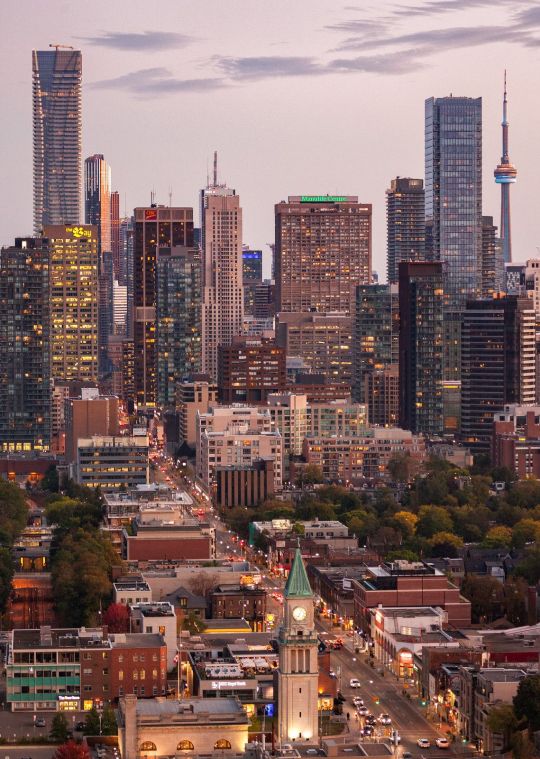
Food, A Window to Cultural Diversity and a Unifying Thread
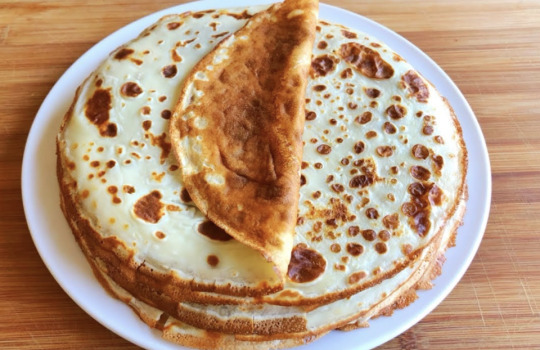
Ayan Nura Cooking. (2017, October 31). Malawax [Video]. YouTube. https://www.youtube.com/watch?v=OoYopTzfdTE
Food goes beyond mere sustenance; it acts as a window to diverse cultures and serves as a unifying thread in my life, connecting people through shared experiences and tastes.
As a Somali girl, I've grown up immersed in the flavorful traditions of Somali cuisine. One particular delight, "Malawax" (pronounced Ma-low-ah), holds a special spot in my heart. It's a thin, crepe-like treat traditionally enjoyed with sugar. However, thanks to my Western upbringing, I've developed a unique twist—I adore slathering Nutella generously over it. This culinary fusion embodies the beautiful mix of my Somali heritage and Western influences.
One of my most cherished childhood memories revolves around food, specifically Malawax. I can vividly recall being seven years old, seated at the kitchen table, joyfully devouring one Malawax after another. My mom, the talented chef behind these mouthwatering creations, couldn't help but laugh each time I requested another. I found myself devouring ten in a row. Her laughter still resonates in my memory, turning each bite of Malawax into a taste of nostalgia and love.
However, until a couple of years ago, I hadn't stumbled upon a cuisine that truly resonated with me beyond Somali dishes. That all changed two years ago during a memorable outing with my uncle when I ventured into the world of Chinese cuisine for the very first time. As I pored over the menu at a Chinese restaurant, I felt a sense of adventure and curiosity. The air was filled with delicious flavours and fragrances.
One dish that captured my heart that evening was the aromatic and flavorful fried rice. The combination of fluffy rice, an array of fresh vegetables, and savoury seasonings left an enduring impression on my palate. From that moment onwards, Chinese food became my top choice when dining out. The experience opened doors to exploring various cuisines and broadening my culinary horizons.
For me, food represents a journey that transcends geographical boundaries, connecting me with diverse cultures. It serves as a reminder of the warmth of home and the thrill of trying something new. Whether it's indulging in Malawaax with Nutella or relishing the intricate flavours of Chinese fried rice, my love for diverse cuisines continues to expand, reflecting the multicultural tapestry of my life.
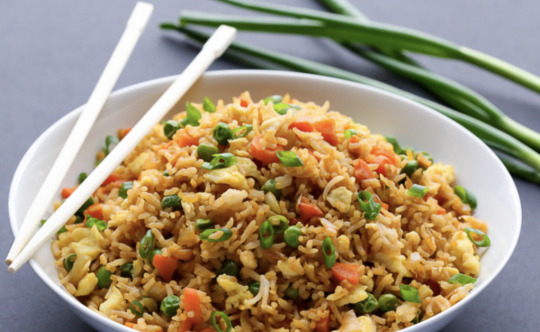
Alia. (2021). The BEST Chinese Fried Rice (Easy 15-Minute Recipe). Everyday Easy Eats. https://www.everydayeasyeats.com/chinese-fried-rice/
Crafting Style with Values: My Fashion Journey
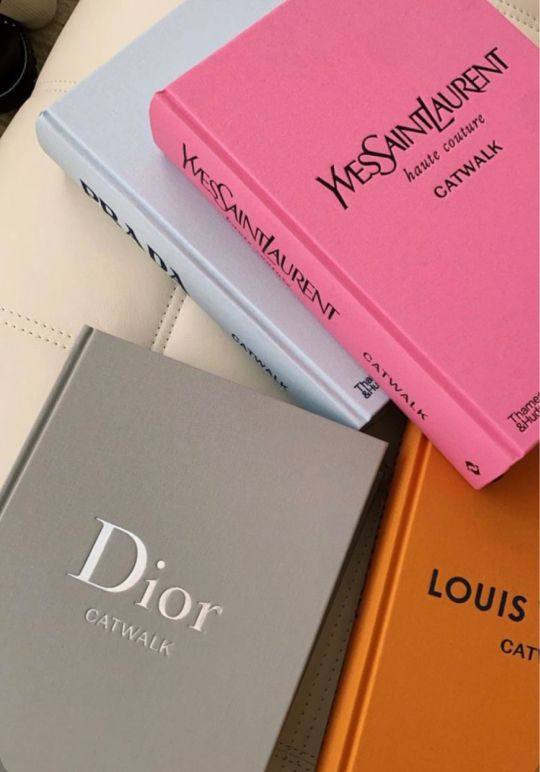
SanneJ. (2022, February 9). Dior: The Collections, 1947-2017 . . . curated on LTK. Pinterest. https://www.pinterest.com/pin/398779742014795343/
Fashion has always been more than just clothing for me; it's a canvas for self-expression and a way to connect with my roots and values. As a young girl, my fascination with fashion started early. I'd wake up with excitement, eagerly planning my outfit for school, and I'd often lose myself in shows like "Bratz", where the mantra was "a passion for fashion". These early influences laid the foundation for my enduring love of style.
One of the most significant influences on my fashion sense has been my mother. She had a knack for dressing me up and imparting invaluable lessons in me like "black goes with everything" and how to pair neutrals with specific colors. Her guidance not only shaped my understanding of fashion but also instilled in me the importance of looking and feeling confident in what I wear.
However, fashion isn't just about aesthetics for me; it's also a reflection of my cultural and religious values. As a Muslim, my hijab is a prominent part of my identity, signalling to the world my faith and commitment. Dressing modestly is not just a personal choice but a way of aligning my outward appearance with my inner beliefs. I take pride in the creative challenge of crafting outfits that are both stylish and modest. A fine line, but one I walk proudly.
Today, when I curate my fashion choices, I draw inspiration from my younger self. I have always been unapologetically me in my style preferences. One vivid memory from my youth involves my love for flared jeans, a stark contrast to the prevailing trend of skinny jeans at the time. I cherished my pair of flared jeans and wore them relentlessly. Just recently, I stumbled upon an almost identical pair at the mall and couldn't resist making it mine. It felt like a nostalgic reunion, a reminder that fashion isn't just about following trends but about embracing what makes you feel truly yourself.
In essence, fashion has evolved from a childhood fascination into a lifelong passion deeply rooted in my culture, values, and the unshakable belief that clothing is, to me, one of the most powerful forms of self-expression.
Architectural Diversity in Toronto:
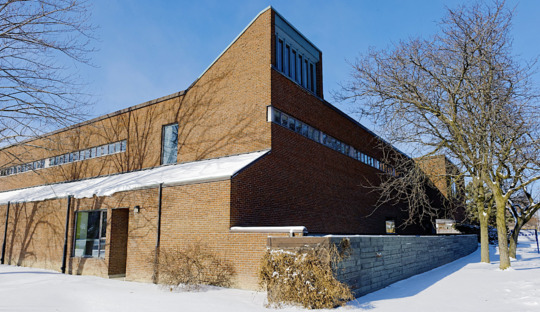
Richview. (n.d.). Toronto Public Library. https://www.torontopubliclibrary.ca/richview/
Toronto's architectural landscape is a captivating tapestry that seamlessly weaves together a rich history and contemporary innovation. The city boasts an eclectic mix of architectural styles, spanning from the elegant Georgian structures of the 19th century to the avant-garde postmodern designs of the 21st century(6). This architectural diversity is not limited to grand edifices or towering skyscrapers; it extends to some of the most cherished community spaces, including libraries.
Libraries: Architectural Gems in Our Community:
In our community, libraries are not just repositories of knowledge; they are architectural gems that encapsulate the city's spirit of inclusivity and cultural appreciation. Two libraries, in particular, hold a special place in my heart – Humberwood's intimate library and Richview's grand multi-floor beauty.
Humberwood Library's architectural charm lies in its cozy intimacy. It welcomes visitors with an unassuming yet inviting facade that conceals the treasure trove of books and stories within. The warm and intimate atmosphere of this library makes it an ideal spot for quiet contemplation and focused reading. Its architectural design effortlessly blends functionality with comfort, creating a haven for book lovers of all ages.
In stark contrast, Richview Library stands as a testament to Toronto's modern architectural prowess. This multi-floor marvel is not just a library; it's an architectural adventure waiting to be explored. Its striking exterior design, characterized by clean lines and contemporary aesthetics, draws the eye and beckons visitors to step inside.
My fondest childhood memories are intertwined with these libraries. Every week, my mother and I embarked on a literary journey, alternating between Humberwood's intimate space and Richview's sprawling floors. Each visit was an architectural exploration, a chance to discover new sections, hidden crevices, and the unique character of each library.
As I wander through the shelves, I can’t help but appreciate how these libraries reflect the essence of our community. Humberwood Library's modest yet inviting design mirrored the close-knit nature of our neighborhood, while Richview Library's symbolized the city's commitment to providing its residents with exceptional spaces for learning and discovery.
In conclusion, Toronto's architectural diversity extends beyond its skyline; it permeates the very heart of our community, shaping spaces like libraries into places of architectural and cultural significance. These libraries not only house knowledge but also serve as a testament to our city's commitment to blending the old with the new, creating architectural marvels that enrich our lives and connect us to our surroundings.
Cultivating Wisdom: My Lifelong Journey Through Books

Atomkind. (2023, September 11). Pin by Moaoa_6 on aesthetic in 2022 | Book aesthetic, Book girl, Aesthetic en 2022 | Caption para fotos, Foto. Pinterest. https://www.pinterest.com/pin/286823070011636593/
My journey with reading began long before I could even hold a book. My earliest memory of reading is the comforting sound of my mom's voice as she read bedtime stories to me when I was about four. Those moments of shared stories and imagination still warm my heart. Unconsciously, this ritual instilled in me a habit that persists to this day—reading before bed. It's a cherished part of my daily routine, a quiet escape into the realms of literature that I look forward to.
But the roots of my love for reading go even deeper. My mom used to read to me while I was still in her womb, and whether it's nature or nurture, it's clear that I was destined to be an avid reader. Books have been my constant companions, opening doors to countless adventures, knowledge, and self-discovery.
As a voracious reader, I find myself finishing at least a book a week, eagerly moving on to the next. Books, in all their forms, have transformed my life in profound ways. They've taught me that knowledge is indeed power, and through the written word, we gain the ability to explore new worlds, perspectives, and possibilities.
One recent book that left an indelible mark on me is "Winning: The Unforgiving Race to Greatness" by Tim Grover. This powerful read not only provided a fresh perspective on success but also served as a catalyst for change in my life. It reinforced the idea that anyone can achieve greatness with the right mindset and relentless dedication.
Reading isn't just about self-improvement; it's a journey that makes us more cultured and tolerant individuals. Take, for instance, a book I encountered at the age of fifteen, "Darius the Great Is Not Okay." Through this novel, I delved into the world of Zoroastrianism, a religion I previously knew nothing about. A few months later, I found myself explaining the intricacies of this faith to my family, thanks to the knowledge I had gained from that book.
While I appreciate the convenience of digital books, my heart has an unwavering preference for physical copies, especially hardback covers. There's something beautiful about the weight of a book in my hands, the texture of the pages, and even the distinct aroma of its pages. It's an experience that digital formats simply can't replicate.
In essence, my love for reading has been a constant presence throughout my life nurtured by family, fueled by curiosity, and enriched by the written word. It's a journey that continues to shape my perspective, inspire my aspirations, and provide solace in both the familiar and the unknown. Reading is not just a hobby; it's a lifeline to the world's wisdom and wonders.
PS Take a look at my library borrows for the next couple of weeks!
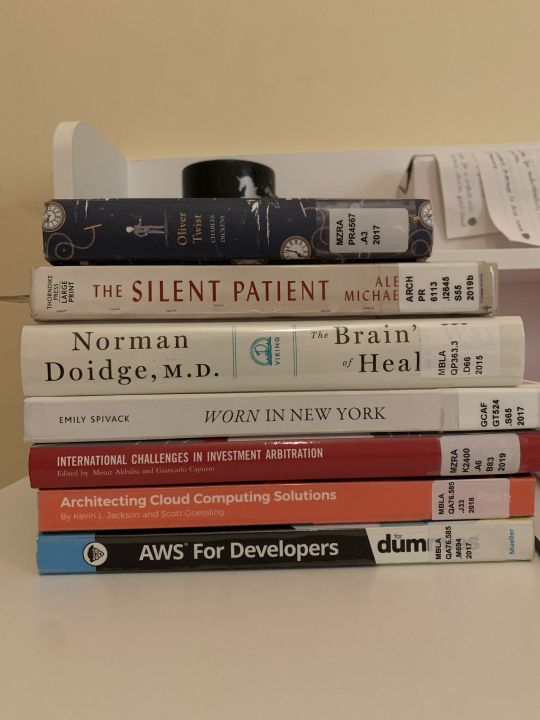
Celebrating the Joy of Leisure: My Evening of Entertainment
After a day filled with rigorous studying and completing assignments, I firmly believe in the importance of setting aside an hour or two in the evening for pure relaxation. This cherished time offers me the opportunity to unwind and recharge, preparing myself for the challenges of the next day. For me, entertainment serves as the ideal escape from the demands of daily life, and it's a source of immense joy and solace.
Exploring YouTube and Revisiting Favorites
One of my favourite pastimes during these moments of relaxation is delving into my YouTube "Watch Later" list. This ever-growing collection houses an array of videos, from educational content to entertainment, and everything in between. It's like having a treasure trove of digital adventures at my fingertips, waiting to be explored. Whether it's learning a new recipe, diving into a fascinating documentary, or simply enjoying some light-hearted comedy sketches, YouTube offers a diverse range of content to suit every mood.
A Beloved Cinematic Gem: "The Devil Wears Prada"
When it comes to movies, there's one that has a special place in my heart - "The Devil Wears Prada." This film combines two elements that never fail to captivate me: fashion and unyielding work ethic. The character of Andy Sachs, portrayed brilliantly by Anne Hathaway, resonates with me on a personal level. Her journey from a novice in the fashion world to a confident professional is not only inspiring but a testament to the idea that hard work and determination can lead to remarkable transformations. I find myself returning to this cinematic gem time and time again, drawn by its compelling narrative and the underlying message that success often demands sacrifices and personal growth.
A Moment of Relief and Anticipation
Entertainment isn't just a diversion for me; it's a lifeline. It provides a sense of relief, a pause button in the relentless march of time, allowing me to momentarily escape into different worlds and experiences. Knowing that I have this oasis of entertainment to look forward to at the end of a taxing day keeps me motivated and focused. It's a reminder that life isn't just about responsibilities and commitments; it's also about finding joy in the small pleasures.
Sketching Amidst the Entertainment
At times, when my mind is particularly active and my creative spirit is awake, I find solace in sketching while indulging in my chosen form of entertainment. This unique combination allows me to engage both my visual and auditory senses simultaneously. It's as if the act of sketching becomes a silent conversation with the content I'm consuming, a creative dialogue that adds another layer of depth to my leisure time.
Furthermore, entertainment serves as my daily refuge, offering a precious respite from the demands of my academic pursuits. From YouTube explorations to revisiting my beloved movie, "The Devil Wears Prada," these moments of relaxation provide not only relief but also a source of inspiration and anticipation. They remind me that life's journey is enriched by the simple pleasures we find along the way and that even in the busiest of days, there's always time for a bit of entertainment and self-care.
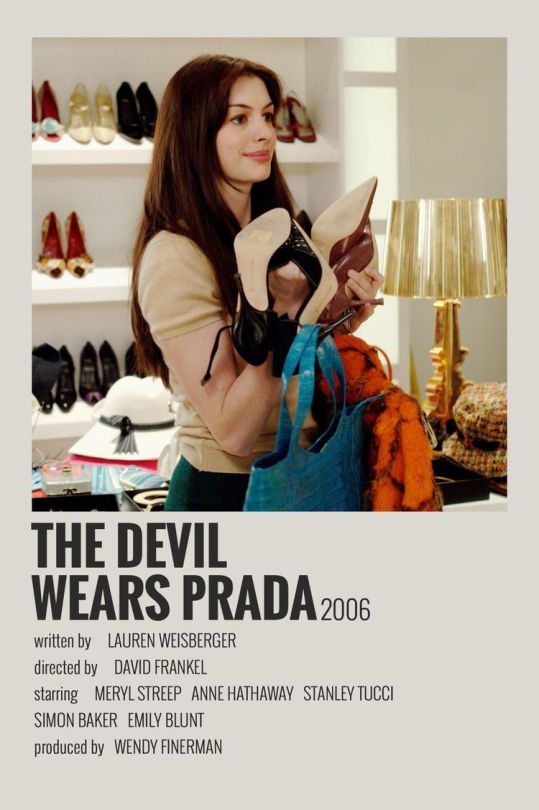
Coco, R. (2023, August 11). Iconic Movie Posters. Pinterest. https://www.pinterest.com/pin/13370130136772245/
In conclusion, Toronto's rich cultural tapestry, my family's profound influence, and my personal experiences have all played significant roles in shaping my culinary preferences, fashion choices, architectural appreciation, leisure activities, and, most notably, my lifelong love of reading. These elements have contributed to the unique blend that defines who I am today. As I continue to explore and embrace the world's diverse cultures, I look forward to the new influences and experiences that will undoubtedly enrich the tapestry of who I am.
Thank you so much for reading through my blog!! I hope you enjoy the next one <3

Rice, G. (2019, September 8). 14 Of The Best Dog Posts From This Week. Pinterest. https://www.pinterest.com/pin/59813501290926756/
Works Cited
Alia. (2021). The BEST Chinese Fried Rice (Easy 15-Minute Recipe). Everyday Easy Eats. https://www.everydayeasyeats.com/chinese-fried-rice/
Atomkind. (2023, September 11). Pin by Moaoa_6 on aesthetic in 2022 | Book aesthetic, Book girl, Aesthetic en 2022 | Caption para fotos, Foto. Pinterest. https://www.pinterest.com/pin/286823070011636593/
Ayan Nura Cooking. (2017, October 31). Malawax [Video]. YouTube. https://www.youtube.com/watch?v=OoYopTzfdTE
Coco, R. (2023, August 11). Iconic Movie Posters. Pinterest. https://www.pinterest.com/pin/13370130136772245/
Rice, G. (2019, September 8). 14 Of The Best Dog Posts From This Week. Pinterest. https://www.pinterest.com/pin/59813501290926756/
Toronto Modern Architecture | Villa Architecture in Toronto. (n.d.). http://kalbodstudio.com/modern-architecture-in-toronto
SanneJ. (2022, February 9). Dior: The Collections, 1947-2017 . . . curated on LTK. Pinterest. https://www.pinterest.com/pin/398779742014795343/
0 notes
Photo


Architecture in Swindon 7
4 notes
·
View notes
Text
Fantasy Guide to Architecture
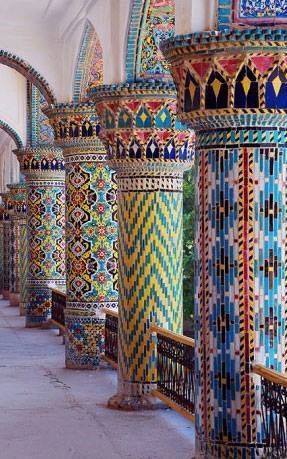


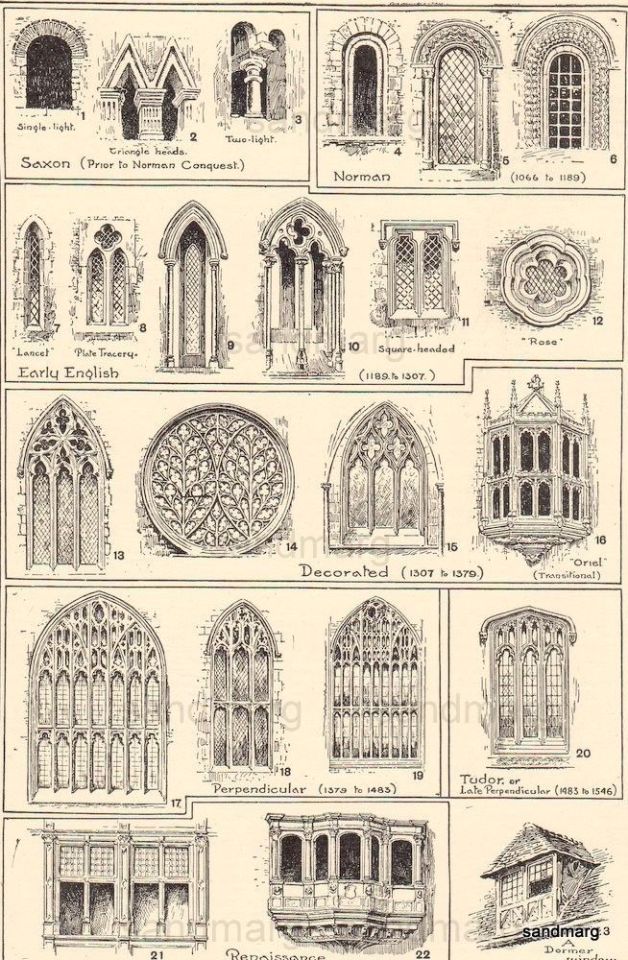


This post has been waiting on the back burner for weeks and during this time of quarantine, I have decided to tackle it. This is probably the longest post I have ever done. I is very tired and hope that I have covered everything from Ancient times to the 19th Century, that will help you guys with your worldbuilding.
Materials
What you build with can be determined by the project you intend, the terrain you build on and the availability of the material. It is one characteristic that we writers can take some some liberties with.
Granite: Granite is an stone formed of Igneous activity near a fissure of the earth or a volcano. Granites come in a wide range of colour, most commonly white, pink, or grey depending on the minerals present. Granite is hard and a durable material to build with. It can be built with without being smoothed but it looks bitchin' and shiny all polished up.
Marble: Probably everyone's go to materials for building grand palaces and temples. Marble is formed when great pressure is placed on limestone. Marble can be easily damaged over time by rain as the calcium in the rock dissolves with the chemicals found in rain. Marble comes in blue, white, green, black, white, red, gray and yellow. Marble is an expensive material to build with, highly sought after for the most important buildings. Marble is easy to carve and shape and polishes to a high gleam. Marble is found at converging plate boundaries.
Obsidian: Obsidian is probably one of the most popular stones mentioned in fantasy works. Obsidian is an igneous rock formed of lava cooling quickly on the earth's surfaces. Obsidian is a very brittle and shiny stone, easy to polish but not quite a good building material but a decorative one.
Limestone: Limestone is made of fragments of marine fossils. Limestone is one of the oldest building materials. Limestone is an easy material to shape but it is easily eroded by rain which leads most limestone monuments looking weathered.
Concrete: Concrete has been around since the Romans. Concrete is formed when aggregate (crushed limstone, gravel or granite mixed with fine dust and sand) is mixed with water. Concrete can be poured into the desired shape making it a cheap and easy building material.
Brick: Brick was one of history's most expensive materials because they took so long to make. Bricks were formed of clay, soil, sand, and lime or concrete and joined together with mortar. The facade of Hampton Court Palace is all of red brick, a statement of wealth in the times.
Glass: Glass is formed of sand heated until it hardens. Glass is an expensive material and for many years, glass could not be found in most buildings as having glass made was very expensive.
Plaster: Plaster is made from gypsum and lime mixed with water. It was used for decoration purposes and to seal walls. A little known fact, children. Castle walls were likely painted with plaster or white render on the interior.
Wattle and Daub: Wattle and daub is a building material formed of woven sticks cemented with a mixture of mud, one of the most common and popular materials throughout time.
Building terms
Arcade: An arcade is a row of arches, supported by columns.
Arch: An arch is a curved feature built to support weight often used for a window or doorway.
Mosaic: Mosaics are a design element that involves using pieces of coloured glass and fitted them together upon the floor or wall to form images.
Frescos: A design element of painting images upon wet plaster.
Buttress: A structure built to reinforce and support a wall.
Column: A column is a pillar of stone or wood built to support a ceiling. We will see more of columns later on.
Eave: Eaves are the edges of overhanging roofs built to allow eater to run off.
Vaulted Ceiling: The vaulted ceilings is a self-supporting arched ceiling, than spans over a chamber or a corridor.
Colonnade: A colonnade is a row of columns joined the entablature.
Entablature: a succession of bands laying atop the tops of columns.
Bay Window: The Bay Window is a window projecting outward from a building.
Courtyard/ Atrium/ Court: The courtyard is an open area surrounded by buildings on all sides
Dome: The dome resembles a hollow half of a sphere set atop walls as a ceiling.
Façade: the exterior side of a building
Gable: The gable is a triangular part of a roof when two intersecting roof slabs meet in the middle.
Hyphen: The hyphen is a smaller building connecting between two larger structures.
Now, let's look at some historical building styles and their characteristics of each Architectural movement.
Classical Style
The classical style of Architecture cannot be grouped into just one period. We have five: Doric (Greek), Ionic (Greek), Corinthian (Greek), Tuscan (Roman) and Composite (Mixed).
Doric: Doric is the oldest of the orders and some argue it is the simplest. The columns of this style are set close together, without bases and carved with concave curves called flutes. The capitals (the top of the column) are plain often built with a curve at the base called an echinus and are topped by a square at the apex called an abacus. The entablature is marked by frieze of vertical channels/triglyphs. In between the channels would be detail of carved marble. The Parthenon in Athens is your best example of Doric architecture.
Ionic: The Ionic style was used for smaller buildings and the interiors. The columns had twin volutes, scroll-like designs on its capital. Between these scrolls, there was a carved curve known as an egg and in this style the entablature is much narrower and the frieze is thick with carvings. The example of Ionic Architecture is the Temple to Athena Nike at the Athens Acropolis.
Corinthian: The Corinthian style has some similarities with the Ionic order, the bases, entablature and columns almost the same but the capital is more ornate its base, column, and entablature, but its capital is far more ornate, commonly carved with depictions of acanthus leaves. The style was more slender than the others on this list, used less for bearing weight but more for decoration. Corinthian style can be found along the top levels of the Colosseum in Rome.
Tuscan: The Tuscan order shares much with the Doric order, but the columns are un-fluted and smooth. The entablature is far simpler, formed without triglyphs or guttae. The columns are capped with round capitals.
Composite: This style is mixed. It features the volutes of the Ionic order and the capitals of the Corinthian order. The volutes are larger in these columns and often more ornate. The column's capital is rather plain. for the capital, with no consistent differences to that above or below the capital.
Islamic Architecture
Islamic architecture is the blanket term for the architectural styles of the buildings most associated with the eponymous faith. The style covers early Islamic times to the present day. Islamic Architecture has some influences from Mesopotamian, Roman, Byzantine, China and the Mongols.
Paradise garden: As gardens are an important symbol in Islam, they are very popular in most Islamic-style buildings. The paradise gardens are commonly symmetrical and often enclosed within walls. The most common style of garden is split into four rectangular with a pond or water feature at the very heart. Paradise gardens commonly have canals, fountains, ponds, pools and fruit trees as the presence of water and scent is essential to a paradise garden.
Sehan: The Sehan is a traditional courtyard. When built at a residence or any place not considered to be a religious site, the sehan is a private courtyard. The sehan will be full of flowering plants, water features snd likely surrounded by walls. The space offers shade, water and protection from summer heat. It was also an area where women might cast off their hijabs as the sehan was considered a private area and the hijab was not required. A sehan is also the term for a courtyard of a mosque. These courtyards would be surrounded by buildings on all sides, yet have no ceiling, leaving it open to the air. Sehans will feature a cleansing pool at the centre, set under a howz, a pavilion to protect the water. The courtyard is used for rituals but also a place of rest and gathering.
Hypostyle Hall: The Hypostyle is a hall, open to the sky and supported by columns leading to a reception hall off the main hall to the right.
Muqarnas : Muqarnas is a type of ornamentation within a dome or a half domed, sometimes called a "honeycomb", or "stalactite" vaulted ceiling. This would be cast from stone, wood, brick or stucco, used to ornament the inside of a dome or cupola. Muqarnas are used to create transitions between spaces, offering a buffer between the spaces.
African Architecture
African Architecture is a very mixed bag and more structurally different and impressive than Hollywood would have you believe. Far beyond the common depictions of primitive buildings, the African nations were among the giants of their time in architecture, no style quite the same as the last but just as breathtaking.
Somali architecture: The Somali were probably had one of Africa's most diverse and impressive architectural styles. Somali Architecture relies heavy on masonry, carving stone to shape the numerous forts, temples, mosques, royal residences, aqueducts and towers. Islamic architecture was the main inspiration for some of the details of the buildings. The Somali used sun-dried bricks, limestone and many other materials to form their impressive buildings, for example the burial monuments called taalo
Ashanti Architecture: The Ashanti style can be found in present day Ghana. The style incorporates walls of plaster formed of mud and designed with bright paint and buildings with a courtyard at the heart, not unlike another examples on this post. The Ashanti also formed their buildings of the favourite method of wattle and daub.
Afrikaner Architecture: This is probably one of the oddest architectural styles to see. Inspired by Dutch settlers (squatters), the buildings of the colony (planters/squatters) of South Africa took on a distinctive Dutch look but with an Afrikaner twist to it making it seem both familiar and strange at the same time.
Rwandan Architecture: The Rwandans commonly built of hardened clay with thatched roofs of dried grass or reeds. Mats of woven reeds carpeted the floors of royal abodes. These residences folded about a large public area known as a karubanda and were often so large that they became almost like a maze, connecting different chambers/huts of all kinds of uses be they residential or for other purposes.
Aksumite Architecture: The Aksumite was an Empire in modern day Ethiopia. The Aksumites created buildings from stone, hewn into place. One only has to look at the example of Bete Medhane Alem to see how imposing it was.
Yoruba Architecture: Yoruba Architecture was made by earth cured until it hardened enough to form into walls, or they used wattle and daub, roofed by timbers slats coated in woven grass or leaves. Each unit divided up parts of the buildings from facilities to residences, all with multiple entrances, connected together.
Igbo Architecture: The Igbo style follows some patterns of the Yoruba architecture, excepting that there are no connected walls and the spacing is not so equal. The closer a unit was to the centre, the more important inhabitants were.
Hausa architecture: Hausa Architecture was formed of monolithic walls coated in plaster. The ceilings and roof of the buildings were in the shape of small domes and early vaulted ceilings of stripped timber and laterite. Hausa Architecture features a single entrance into the building and circular walls.
Nubian Architecture: Nubia, in modern day Ethiopia, was home to the Nubians who were one of the world's most impressive architects at the beginning of the architecture world and probably would be more talked about if it weren't for the Egyptians building monuments only up the road. The Nubians were famous for building the speos, tall tower-like spires carved of stone. The Nubians used a variety of materials and skills to build, for example wattle and daub and mudbrick. The Kingdom of Kush, the people who took over the Nubian Empire was a fan of Egyptian works even if they didn't like them very much. The Kushites began building pyramid-like structures such at the sight of Gebel Barkal
Egyptian Architecture: The Egyptians were the winners of most impressive buildings for s good while. Due to the fact that Egypt was short on wood, Ancient Egyptians returned to building with limestone, granite, mudbrick, sandstone which were commonly painted with bright murals of the gods along with some helpful directions to Anubis's crib. The Egyptians are of course famous for their pyramids but lets not just sit on that bandwagon. Egyptian Architecture sported all kinds of features such as columns, piers, obelisks and carving buildings out of cliff faces as we see at Karnak. The Egyptians are cool because they mapped out their buildings in such a way to adhere to astrological movements meaning on special days if the calendar the temple or monuments were in the right place always. The Egyptians also only build residences on the east bank of the Nile River, for the opposite bank was meant for the dead. The columns of Egyptian where thicker, more bulbous and often had capitals shaped like bundles of papyrus reeds.
Chinese Architecture
Chinese Architecture is probably one of the most recognisable styles in the world. The grandness of Chinese Architecture is imposing and beautiful, as classical today as it was hundreds of years ago.
The Presence of Wood: As China is in an area where earthquakes are common, most of the buildings are were build of wood as it was easy to come across and important as the Ancient Chinese wanted a connection to nature in their homes.
Overhanging Roofs: The most famous feature of the Chinese Architectural style are the tiled roofs, set with wide eaves and upturned corners. The roofs were always tiled with ceramic to protect wood from rotting. The eaves often overhung from the building providing shade.
Symmetrical Layouts: Chinese Architecture is symmetrical. Almost every feature is in perfect balance with its other half.
Fengshui: Fengshui are philosophical principles of how to layout buildings and towns according to harmony lain out in Taoism. This ensured that the occupants in the home where kept in health, happiness, wealth and luck.
One-story: As China is troubled by earthquakes and wood is not a great material for building multi-storied buildings, most Chinese buildings only rise a single floor. Richer families might afford a second floor but the single stories compounds were the norm.
Orientation: The Ancient Chinese believed that the North Star marked out Heaven. So when building their homes and palaces, the northern section was the most important part of the house and housed the heads of the household.
Courtyards: The courtyard was the most important area for the family within the home. The courtyard or siheyuan are often built open to the sky, surrounded by verandas on each side.
Japanese Architecture
Japanese Architecture is famous for its delicacy, smooth beauty and simplistic opulence. Japanese Architecture has been one of the world's most recognisable styles, spanning thousands of years.
Wood as a Common Material: As with the Chinese, the most popular material used by the Japanese is wood. Stone and other materials were not often used because of the presence of earthquakes. Unlike Chinese Architecture, the Japanese did not paint the wood, instead leaving it bare so show the grain.
Screens and sliding doors: The shoji and fusuma are the screens and sliding doors are used in Japanese buildings to divide chambers within the house. The screens were made of light wood and thin parchment, allowing light through the house. The screens and sliding doors were heavier when they where used to shutter off outside features.
Tatami: Tatami mats are used within Japanese households to blanket the floors. They were made of rice straw and rush straw, laid down to cushion the floor.
Verandas: It is a common feature in older Japanese buildings to see a veranda along the outside of the house. Sometimes called an engawa, it acted as an outdoor corridor, often used for resting in.
Genkan: The Genkan was a sunken space between the front door and the rest of the house. This area is meant to separate the home from the outside and is where shoes are discarded before entering.
Nature: As both the Shinto and Buddhist beliefs are great influences upon architecture, there is a strong presence of nature with the architecture. Wood is used for this reason and natural light is prevalent with in the home. The orientation is meant to reflect the best view of the world.
Indian Architecture
India is an architectural goldmine. There are dozens of styles of architecture in the country, some spanning back thousands of years, influenced by other cultures making a heady stew of different styles all as beautiful and striking as the last.
Mughal Architecture: The Mughal architecture blends influences from Islamic, Persian along with native Indian. It was popular between the 16th century -18th century when India was ruled by Mughal Emperors. The Taj Mahal is the best example of this.
Indo-Saracenic Revival Architecture: Indo Saracenic Revival mixes classical Indian architecture, Indo-Islamic architecture, neo-classical and Gothic revival of the 1800s.
Cave Architecture: The cave architecture is probably one of the oldest and most impressive styles of Indian architecture. In third century BC, monks carved temples and buildings into the rock of caves.
Rock-Cut Architecture: The Rock-cut is similar to the cave style, only that the rock cut is carved from a single hunk of natural rock, shaped into buildings and sprawling temples, all carved and set with statues.
Vesara Architecture: Vesara style prevalent in medieval period in India. It is a mixture of the Dravida and the Nagara styles. The tiers of the Vesara style are shorter than the other styles.
Dravidian Architecture: The Dravidian is the southern temple architectural style. The Kovils are an example of prime Dravidian architecture. These monuments are of carved stone, set up in a step like towers like with statues of deities and other important figures adorning them.
Kalinga Architecture: The Kalinga style is the dominant style in the eastern Indian provinces. The Kalinga style is famous for architectural stipulations, iconography and connotations and heavy depictions of legends and myths.
Sikh Architecture: Sikh architecture is probably the most intricate and popular of the styles here. Sikh architecture is famous for its soft lines and details.
Romanesque (6th -11th century/12th)
Romanesque Architecture is a span between the end of Roman Empire to the Gothic style. Taking inspiration from the Roman and Byzantine Empires, the Romanesque period incorporates many of the styles.
Rounded arches: It is here that we see the last of the rounded arches famous in the classical Roman style until the Renaissance. The rounded arches are very popular in this period especially in churches and cathedrals. The rounded arches were often set alongside each other in continuous rows with columns in between.
Details: The most common details are carved floral and foliage symbols with the stonework of the Romanesque buildings. Cable mouldings or twisted rope-like carvings would have framed doorways.
Pillars: The Romanesque columns is commonly plainer than the classical columns, with ornate captials and plain bases. Most columns from this time are rather thick and plain.
Barrel Vaults: A barrel vaulted ceiling is formed when a curved ceiling or a pair of curves (in a pointed ceiling). The ceiling looks rather like half a tunnel, completely smooth and free of ribs, stone channels to strengthen the weight of the ceiling.
Arcading: An arcade is a row of arches in a continual row, supported by columns in a colonnade. Exterior arcades acted as a sheltered passage whilst inside arcades or blind arcades, are set against the wall the arches bricked, the columns and arches protruding from the wall.
Gothic Architecture (12th Century - 16th Century)
The Gothic Architectural style is probably one of the beautiful of the styles on this list and one of most recognisable. The Gothic style is a dramatic, opposing sight and one of the easiest to describe.
Pointed arch: The Gothic style incorporates pointed arches, in the windows and doorways. The arches were likely inspired by pre-Islamic architecture in the east.
Ribbed vault: The ribbed vault of the Gothic age was constructed of pointed arches. The trick with the ribbed vaulted ceiling, is that the pointed arches and channels to bear the weight of the ceiling.
Buttresses: The flying buttress is designed to support the walls. They are similar to arches and are connected to counter-supports fixed outside the walls.
Stained-Glass Window: This is probably one of the most recognisable and beautiful of the Gothic features. They can be set in round rose windows or in the pointed arches.
Renaissance Architecture (15th Century- 17th Century)
Renaissance architecture was inspired by Ancient Roman and Greek Architecture. Renaissance Architecture is Classical on steroids but has its own flare. The Renaissance was a time for colour and grandeur.
Columns and pilasters: Roman and Greek columns were probably the greatest remix of the Renaissance period. The architecture of this period incorporated the five orders of columns are used: Tuscan, Doric, Ionic, Corinthian and Composite. The columns were used to hold up a structure, support ceilings and adorn facades. Pilasters were columns within a chamber, lining the walls for pure decoration purposes.
Arches: Arches are rounded in this period, having a more natural semi-circular shape at its apex. Arches were a favourite feature of the style, used in windows, arcades or atop columns.
Cupola: Is a small dome-like tower atop a bigger dome or a rooftop meant to allow light and air into the chamber beneath.
Vaulted Ceiling/Barrel Vault: Renaissance vaulted ceilings do not have ribs. Instead they are semi-circular in shape, resting upon a square plain rather than the Gothic preference of rectangular. The barrel vault held by its own weight and would likely be coated in plaster and painted.
Domes: The dome is the architectural feature of the Renaissance. The ceiling curves inwards as it rises, forming a bowl like shape over the chamber below. The dome's revival can be attributed to Brunelleschi and the Herculean feat of placing a dome on the Basilica di Santa Maria del Fiore. The idea was later copied by Bramante who built St. Peter's Basilica.
Frescos: To decorate the insides of Renaissance buildings, frescos (the art of applying wet paint to plaster as it dries) were used to coat the walls and ceilings of the buildings. The finest frescos belong to Michelangelo in the Sistine Chapel.
Baroque (1625–1750)
Baroque incorporates some key features of Renaissance architecture, such as those nice columns and domes we saw earlier on. But Baroque takes that to the next level. Everything is higher, bigger, shinier, brighter and more opulent. Some key features of Baroque palaces and buildings would be:
Domes: These domes were a common feature, left over from the Renaissance period. Why throw out a perfectly good bubble roof, I ask you? But Baroque domes were of course, grander. Their interiors were were nearly always painted or gilded, so it drew the eye upwards which is basically the entire trick with Baroque buildings. Domes were not always round in this building style and Eastern European buildings in Poland and Ukraine for example sport pear-shaped domes.
Solomonic columns: Though the idea of columns have been about for years but the solomonic columns but their own twist on it. These columns spiral from beginning to end, often in a s-curved pattern.
Quadratura: Quadratura was the practice of painting the ceilings and walls of a Baroque building with trompe-l'oeil. Most real life versions of this depict angels and gods in the nude. Again this is to draw the eye up.
Mirrors: Mirrors came into popularity during this period as they were a cool way to create depth and light in a chamber. When windows faced the mirrors on the wall, it creates natural light and generally looks bitchin'. Your famous example is the Hall of Mirrors at the Palace of Versailles.
Grand stairways: The grand sweeping staircases became popular in this era, often acting as the centre piece in a hall. The Baroque staircase would be large and opulent, meant for ceremonies and to smoother guests in grandeur.
Cartouche: The cartouche is a design that is created to add some 3D effect to the wall, usually oval in shape with a convex surface and edged with scrollwork. It is used commonly to outline mirrors on the wall or crest doorways just to give a little extra opulence.
Neoclassical (1750s-19th century)
The Neoclassical Period involved grand buildings inspired by the Greek orders, the most popular being the Doric. The main features of Neoclassical architecture involve the simple geometric lines, columns, smooth walls, detailing and flat planed surfaces. The bas-reliefs of the Neoclassical style are smoother and set within tablets, panels and friezes. St. Petersburg is famous for the Neoclassical styles brought in under the reign of Catherine the Great.
Greek Revival (late 18th and early 19th century)
As travel to other nations became easier in this time period, they became to get really into the Ancient Greek aesthetic. During this architectural movement they brought back the gabled roof, the columns and the entablature. The Greek Revival was more prevalent in the US after the Civil War and in Northern Europe.
Hope this helps somewhat @marril96
#fantasy guide#architecture#indian architecture#Egyptian architecture#Romanesque Architecture#Greek Revival architecture#african architecture#ancient architecture#worldbuilding#look at this monster post#wip#writing resources#writing reference#writing advice writing reference#writing advice#writing reference writing resources#writeblr#writer's problems#spilled words#writer's life#writer#writing#worldbuilding guide#buildings#fantasy architecture#fantasy
27K notes
·
View notes
Text
Read this: Here's the dialogue between Gal Gadot (@gal_gadot) and Debi Mazar (@debimazar): INT. PRIVATE DESIGN STUDIO — AFTERNOON The studio is flooded with natural light. Rolls of parchment blueprints and sleek digital tablets lie across a long table. Gal Gadot sips from a porcelain cup as Debi Mazar enters with a leather portfolio in hand. Gal Gadot (@gal_gadot): Debi, we’re at the threshold of something monumental. The Somali Royal Palace and the adjoining The Magnificent Seven neighborhood. Ten kilometers may seem like a brief distance, but the gravity of the undertaking is immense. Debi Mazar (@debimazar): Absolutely, Gal. It’s not just about the physical proximity—it’s about the strategic positioning. These aren’t just homes; they’re sovereign statements. We must ensure that every design element speaks to the power and elegance of its future residents. Gal: I’ve been thinking about the Macron and Berlusconi estates first. Their architecture must blend heritage with innovation. We want their homes to reflect not just their influence but also the legacy of the Somali Royal family. What are your thoughts on how we should approach the gardens? Debi: The gardens, they must be grand yet intimate. I’m envisioning large, sweeping lawns, but with secluded corners for reflection—spaces that speak to the privacy these families will need. A fusion of Italian flair for Berlusconi, and French elegance for Macron. I’ll start sketching some concepts. Gal: Perfect. And for the Magnificent Seven neighborhood, we’ll need a sense of exclusivity that still fosters a sense of community. We can’t just think about luxury; we need to create a space where politics and business leaders can gather as equals, despite their immense power. Debi: Indeed. Each mansion will be a statement on its own, but the neighborhood needs to have a cohesive identity. A blend of modern architecture and historical references. We’ll make sure the design feels timeless. Perhaps a signature feature—something that ties the entire enclave together, like a central gathering space or an iconic sculpture. Gal: I agree. Perhaps a grand, sculpted fountain at the entrance, something to symbolize unity and strength. It’ll be a subtle nod to the royal heritage while remaining strikingly modern. Let’s meet with the architects and lay down the initial groundwork next week. Debi: I’ll get to work on the landscaping concept, while you focus on the structural plans. This is going to be something extraordinary, Gal. Something that’ll echo for generations. Gal: Indeed, Debi. We’re not just designing houses—we’re building history. They exchange a determined look, ready to embark on the next stage of this monumental project. END SCENE
Synopsis of the Dialogue:
In this dialogue, Gal Gadot (@gal_gadot) and Debi Mazar (@debimazar) discuss their plans for the design and construction of both the Somali Royal Palace and the neighboring The Magnificent Seven enclave. Situated just 10 kilometers from the royal palace, The Magnificent Seven will house influential political and business families, including the Macron and Berlusconi families. The two women strategize how to design these mansions to reflect the power and legacy of their future residents while maintaining a cohesive, exclusive neighborhood. Gal emphasizes the need for both luxury and unity, and Debi suggests incorporating a central gathering space to symbolize the neighborhood’s exclusivity and strength. Together, they plan to create a modern yet timeless space that will leave a lasting impression for generations to come.
0 notes